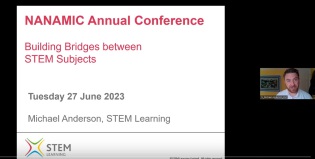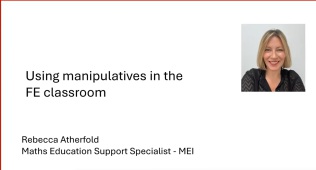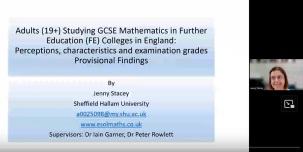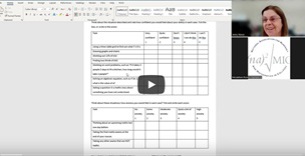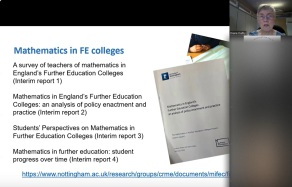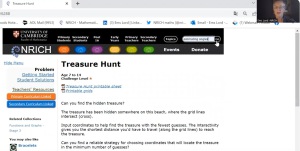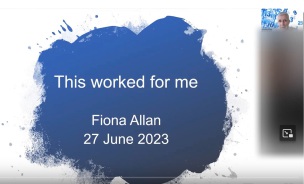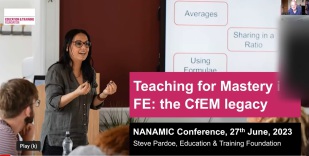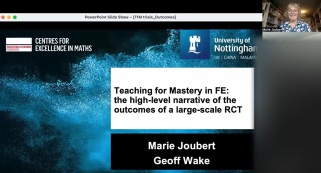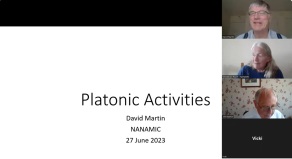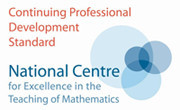Please see below for a short report on each session at the 2023 Annual conference, Click on the title to download the session presentation and click the image to watch the edited Zoom recording on Youtube. There may also be other links to click!
Building Bridges between STEM Subjects Michael Anderson (click to download the presentation)
click on the image below for the video recording
Using Manipulatives in the FE Classroom
Rebecca Atherfold
click on the image below for the video recording
Adults studying GCSE mathematics in FE colleges: perceptions, characteristics, and examination grades (click to download the presentation) Jenny Stacey
Jenny introduces us to the provisional findings of her research into adults studying maths in FE colleges.
She contrasts adults motivation vs 16-18 year olds and gives us the initial analysis of the quantitative data from questionnaires completed by 21 participants. Jenny gave the usual caveats re the small size and also the potential effect of the pandemic before presenting the results: Those with low self efficacy and high anxiety fared worst including two withdrawals. One student had high self-efficacy with high anxiety but passed. So self-efficacy may be more important than anxiety levels
Why be interested? Stereotyping students may cause problems – instead ask students questions to identify the individuals in your class who may need more support to complete the course and pass.
Jenny provides some recommendations to help all learners improve their self-efficacy and reduce anxiety.
She also shared her questionnaire – click here to download it and be inspired to use it or create your own.
click on the images below for the video recordings
The Whole College Approach: evidence of impact and inspiration (click to download the presentation) Diane Dalby
Diane explains what the whole college approach is and results from the university’s research project looking at what actually happens in college. A journey from fragmentation to collaboration for active participation. They supported 16 different colleges in this process and have recommendations for what others need to do to have a good implementation for their college. How to CHIME together.
Diane presents some of the barriers overcome and outcomes achieved, which were often more than the targets initially set. This project is continuing so do contact Diane if you want to find out more.
Apologies that Zoom recorded participant windows over the presentation slides
click on the image below for the video recording
The three ‘e’s: Engaging and enriching activities for embedding fluency and understanding (click to download the presentation) Ems Lord
You might be familiar with Nrich’s written problems but there are also interactive resources and Ems introduces us to them.- Resources that score highly with student engagement, from Treasure hunt, via fractions to Countdown. She also shares the ethos behind Nrich activities.
Participants provide input to the activities but you can go to the Nrich website and try them for yourselves while watching this presentation.
click on the image below for the video recording
This worked for me (click to download the presentation)
Fiona Allan
click on the image below for the video recording
Teaching for Mastery in FE: the CfEM legacy (click to download the presentation)
Steve Pardoe
click on the image below for the video recording
Mastery teaching in FE: the results of a randomised control trial (click to download the presentation)
Marie Joubert
click on the image below for the video recording
Platonic Activities (click to download the presentation)
David Martin
David brings lots of activities related to Platonic solids – including reminding ourselves of their properties. A very much hands on experience. Not just pure maths but links to history, and areas of modern life including viruses and other molecules. Bell ringing also gets a mention! Did you know that the humble dice has a western and Chinese version?
A fun session to get you thinking and be inspired to take some of the explorations to share with your students.
Please download David’s slides before watching the video as some parts of the slides are obscured


